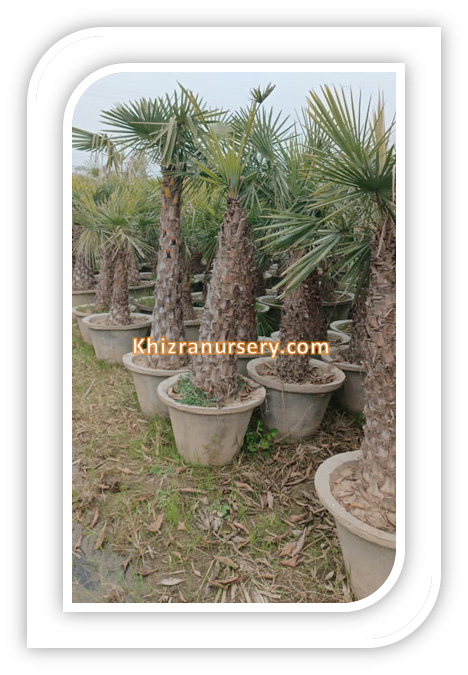Archontophoenix alexandrae (King Alexander Palm)
Archontophoenix alexandra palm trees are tall, elegant, fast growing, water loving palms. They tolerate both boggy conditions and dry spells, but prefer moist, fertile soil. Grows both in tropical and subtropical.
Description
Archontophoenix alexandrae is also known as Alexandra palm, king palm, king alexander palm or Northern Bangalow Palm. It is tall, elegant, water loving and fast growing palm. Archontophoenix alexandrae (Arecaceae) is native to Queensland, Eastern Australia and mostly occurs in wet areas. It is widely cultivate in tropical and sub-tropical regions of the world.
Trunk: The trunk is smooth and ring with leaf scars while the base is noticeably swollen. The stem is solitary (single), gray, slender and up to 15 meters tall & 25 cm in diameter.
Leaves: The leaves are pinnate, 2-3 meters long with a rachis that twists at the midpoint and linear leaflets growing in a single plane. The leaves blades have tendencies to rotate at 90 degrees to expose the whole leaf profile.
Crown Shaft: The crown shaft is light green to reddish brown up to 1 meter long and swollen at the base. The rachis is cover with reddish brown tomentum on the underside. The upper leaflets are dark green while the under surface is whitish grey with prominent secondary veins.
Inflorescence: The inflorescence is less than 1 mm long and drooping with many branches. Male and female flowers are borne on the same inflorescence and greenish white to cream in colour. The male flowers re 5-6 mm long and comprises 9-16 stamens. The female flowers are 3-4 mm long and comprises pistil which is slightly longer than the stamens.
Fruits: The fruits are red, ovoid, pea-sized, about 1-1.5 cm long and have remnants of stigma at the apex.
Landscaping Ideas of Archontophoenix alexandrae
Archontophoenix alexandrae is a beautiful specie and is use in landscaping. It is often use as an ornamental plant and mostly plant in close grouping due to its attractive appearance. Its neat stature makes it perfect for gardens, residential areas and highways landscapes. It is also popular indoor plant but prefer fresh air and full sunlight. A shade patio will be good for young plants which can be transfer to sunny position later.
How to propagate Archontophoenix alexandrae
Archontophoenix alexandrae can be propagate by seeds via sowing them in soil at 24-27˚C during spring season. The germination of seeds takes a couple of months and seedlings sprout out in summer generally. The seeds are not long lasting and lose their viability within few months therefore, it is good to sow seeds readily. The plant has adaptable nature to any type of soil therefore grow easily.
How to take care of Archontophoenix alexandrae
- Soil: Archontophoenix alexandrae prefers clay soil more than sand or silt because clay holds water.
- Light Exposure: It prefers full sunlight if the water is keep up to them but it can also grow in shade.
- Temperature: It is tolerant to the temperatures up to freezing points for a short duration therefore it is suitable for frost-free regions.
- Watering: It is tolerant to waterlogged conditions and appreciates abundant watering at the time of its cultivation.
- Pruning: Diseased, damaged and dried fronds should be prune but increase pruning will cause the palm left bald.
- Use of Fertilizer: It needs proper fertilizer diet that composed up of all the minerals and trace elements.
- Pest & Diseases: It may be damage by spider mites, Phytophora root rot and aerial blight disorder.
- Cold Hardiness: Young trees will not tolerate frost, but adult plants may stand 28 F (-2 C) .
- Growth Speed: Fast Growing


















Reviews
There are no reviews yet.